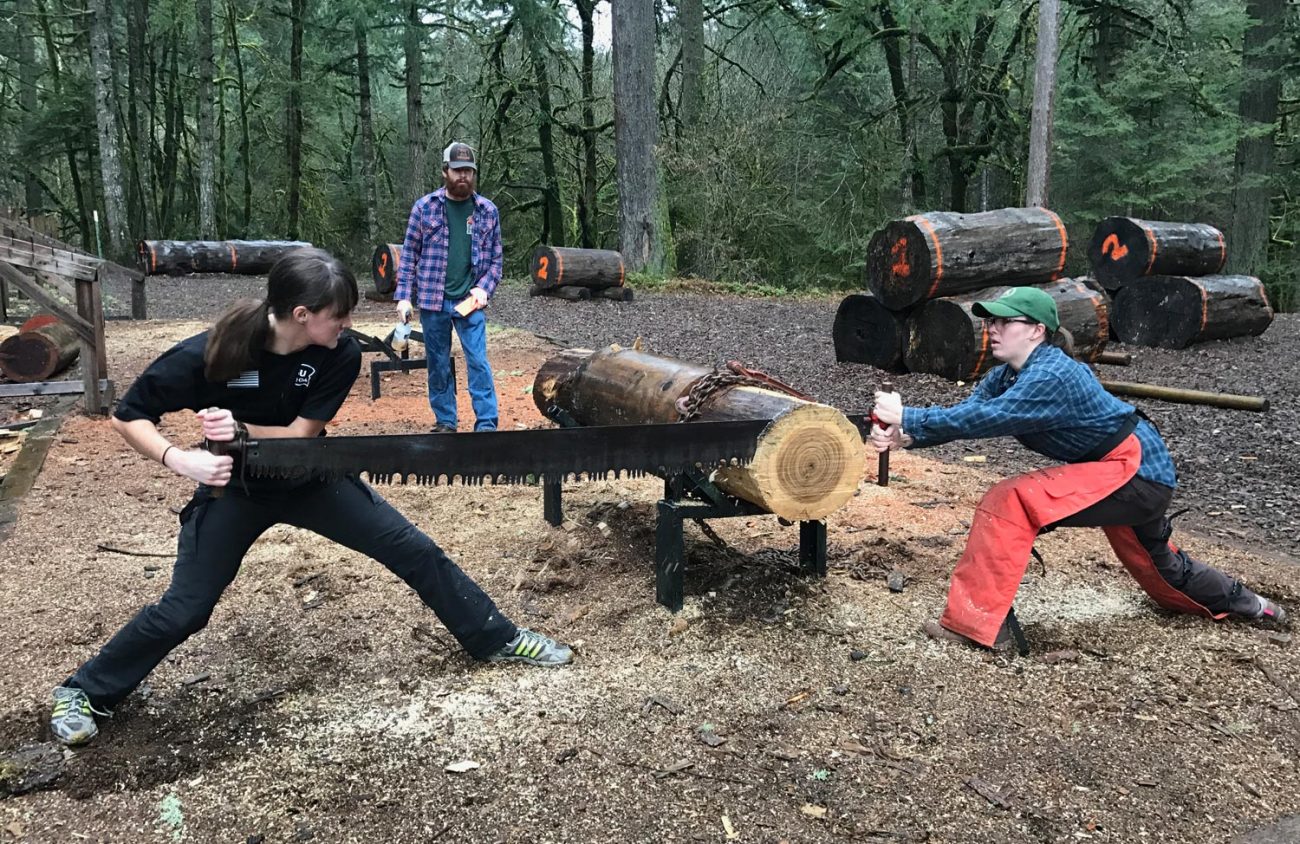Sweat dripping off his scruffy beard, Zane Sandborg hops over logs on the choker course at Oregon State University’s logging sports arena in the otherwise serene Peavy Arboretum. Teammates Robin Wortman and Calvin Kerr compete to see who can balance longest on a slippery log that revolves a few inches off the ground on a sturdy metal spit. Meanwhile, Morgan Kawakami sends a heavy axe cartwheeling through the air as she refines her axe throw technique.
At the college level, logging sports attract a specific crowd. Outdoorsy and adventurous, many of the athletes are students in OSU’s top-ranked forestry school. New jobs are opening in the state’s timber industry, and at the same time, OSU and several high schools across Oregon are seeing growing interest in forestry clubs and logging sports teams.
Sandborg, a forest management major at OSU, grew up in southern California, where timberland is much scarcer than it is in Oregon. He watched lumberjack competitions on TV growing up, but didn’t know the OSU Forestry Club even had a logging sports team until he arrived on campus.
As the team’s vice president, Sandborg spends several days a week improving his crosscut sawing technique and running the log-stack obstacle course and choker race, which is named for the metal “choker” cable used to drag logs uphill.
“Football and baseball are boring,” Sandborg says. “Everyone knows about those; people don’t know about this.”
Obscurity is certainly part of the appeal for Sandborg and his teammates, but members of OSU’s logging sports team are also interested in developing marketable skills. For example, pole climbing, whose object is to scramble 30 to 50 feet directly up the side of a tree trunk using a waist belt and climbing spikes, relates to “topping” or limbing trees.
Log rolling is also useful for developing balance. Some timber companies still hold logs in ponds and transfer them by waterways to the mill.
The bucksaw event is more nostalgic, given that the handsaws used by OSU’s team have long been replaced by chain saws. And while hurling an axe at a target 20 feet away has no practical application for lumber industry workers, it’s something lumberjacks invented to pass the time.
Simon Babcock, the forestry natural resources instructor at Philomath High School, says logging sports are a good way for young people interested in the timber industry to get their feet wet and gain experience and skills they can list on resumés.
As a kid who was raised on the edges of the Coast Range in Corvallis, Babcock grew up watching a lot of busy logging crews near his childhood home. He got a college degree in wildlife management and worked in small-scale logging before becoming a teacher at Philomath, where he has worked for the past 12 years.
Babcock says he’s excited to see growth in the number of students interested in forestry, a field that examines how to make the best use of forest materials while keeping an eye on protecting natural resources. For some it’s a way to connect with parents or grandparents who worked in timber, but Babcock is noticing more and more newcomers who are the first in their families to get involved with forestry.
With recent advances in equipment technology, reforestation and seedling biology, new kinds of jobs are opening up for technicians and engineers.
“Kids are jumping on board,” Babcock says. “They see a need for the future and how they can be an asset to our natural resources. It’s a place they can really find a niche and work.”
